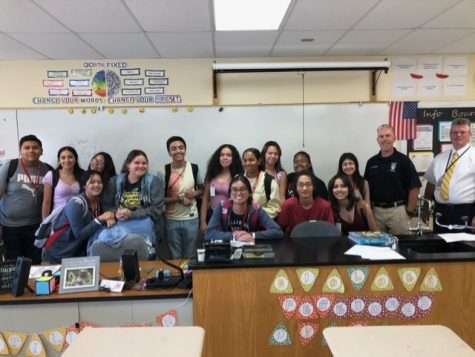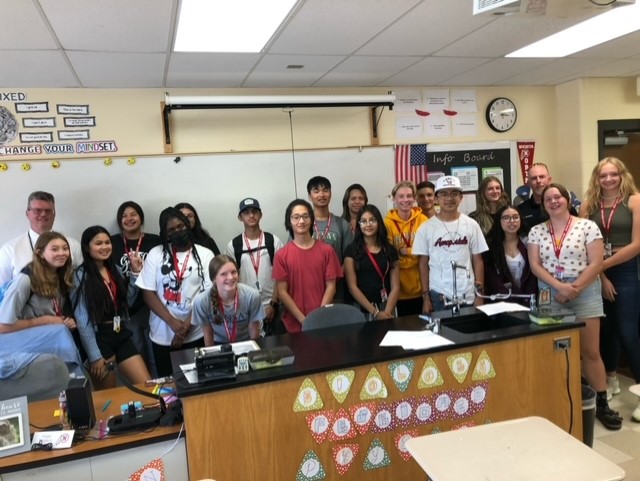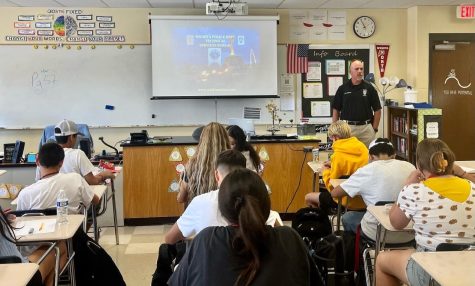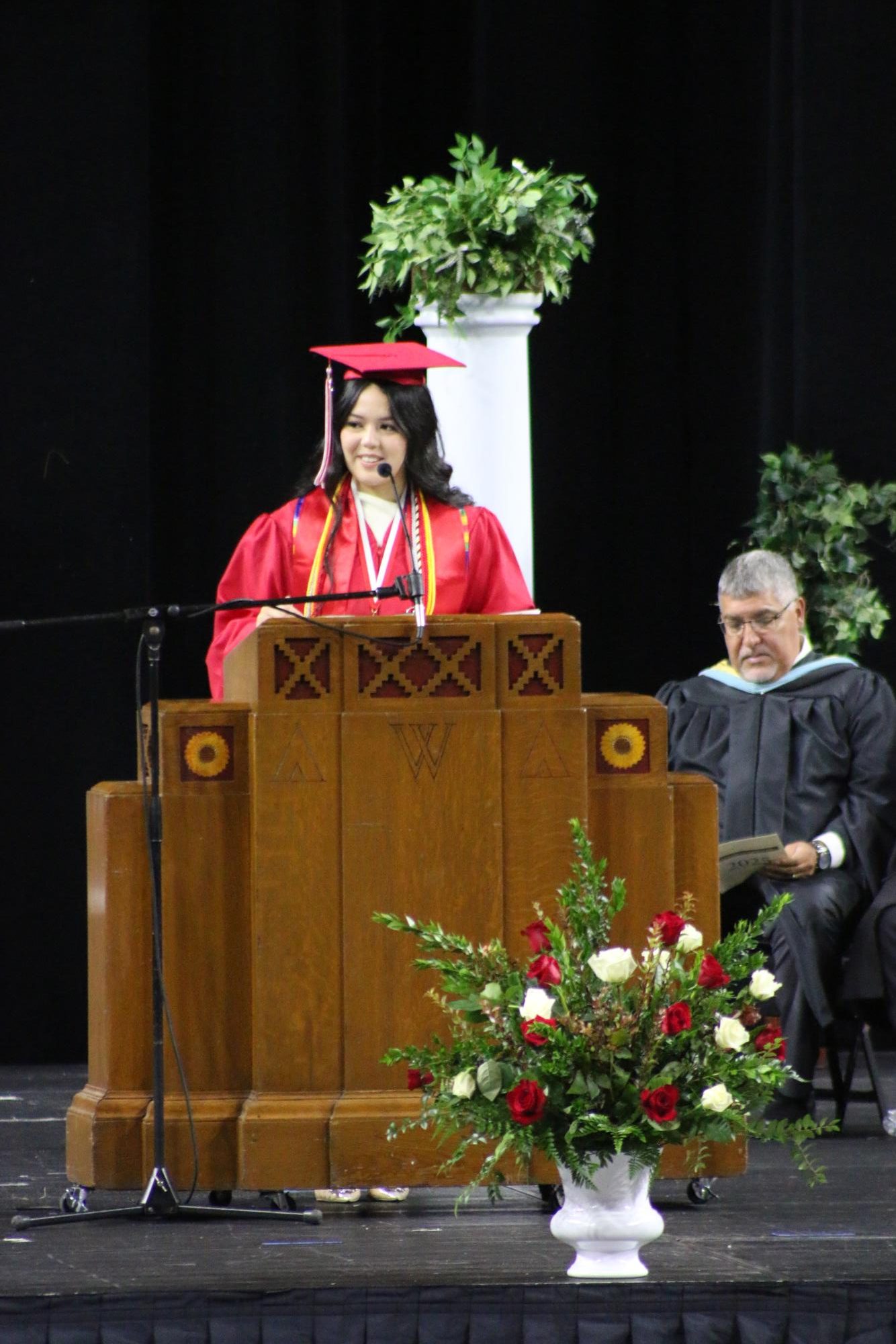Detective Visits North to Give a Special Presentation for the BioMed Class of 2026
September 7, 2022
On Friday, the 26th of August, Detective Bamberger and part of his crew, was invited to North in room F306 by Mrs. Paige Tillotson during 10th hour to give Biomed a slice of the reality of forensic sciences and investigations. The Biomed class of 2025 was invited to come and watch.
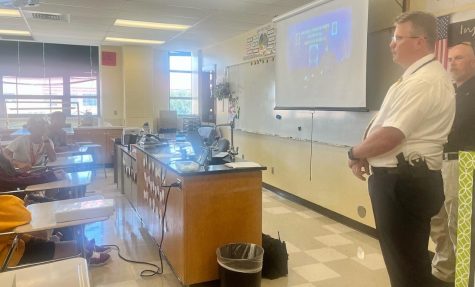
Sergeant Jason Dautrich, who presented to the class, was part of the Crime Scene Investigation Unit of the Wichita Police Department. He typically deals with all of the stuff in the labs and any evidence found that needs analysis.
Photography –
In charge of the photography is Jerry Ogburn, who processes any images that have been taken from crime scenes. Crime scene photos start very wide and likely just outside the crime scene and work their way inside the crime scene, in order to get as much information as possible. Any close up photos are taken at a 90 degree angle and require a measurement reference and pictures of room will always but are not limited to pictures taken from the four corners of the room.
Latent Prints –
In charge of latent printing are Mindy Craig and Katie Beckwith and they review and identify any fingerprints found in crime scenes and potential suspects. They review over 5,000 fingerprints per year! On a crime scene, fingerprints are found using various methods. Print powder is used on smooth, non-porous items. Cyanoacrylate, is just super glue that is vaporized in a chamber to stick to guns and other metals. Ninhydrin is used on paper products. Amido black is used to find prints in blood. Sticky side powder is used on tapes. And gentian violet is used on black tapes (to dye them).
Property and Evidence –
The last thing they deal with is the evidence found on crime scenes. Obviously, they have to store and organize it somewhere. Drugs and illegal weapons are destroyed after analysis. Any evidence pertaining to homicide and sexual assault are kept forever in order to take evidence over time. A good example of this coming in handy was in the capture of Wichita’s very own, BTK Killer, who had killed 10 people over 17 years from 1974 to 1991 and was only caught in 2005 because the evidence was kept and reviewed thoroughly until the evidence was sufficient enough.
Everything else in the custody of the police is either sent back to their owners (or family, if deceased) or sold once the relating case is closed.
On a crime scene however, it is the detective’s job to find evidence so that they can understand and compare it with the testimonies of any suspects found. Sergeant Jason Dautrich shared with us the idea of the Linkage Theory, stating that the victim, criminal, and the crime scene all leaves traces of themselves on the others. For instance, maybe the victim leaves blood on the criminal and the house they died in, maybe the crime scene is where the victims dies but the criminal picked up a piece of the victim’s hair, or maybe the criminal himself leaves evidence of himself on the victim or on the crime scene.
The police have different methods that they use to investigate crime scenes. Sketching, taking images, and using a machine called LEICA are of the most useful most used. In sketches and images, they must contain scales for reference. In crime scenes containing gunshots, the police also use trajectory rods that help them ascertain the likely target. As of recently however, the police use a 3D scanner machine called LECIA that 3D scans a scene, taking only 3 minutes. This allows people who aren’t physically there to investigate the crime scene through virtual reality.
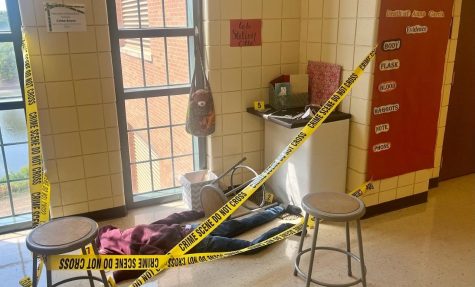
During a Q and A section after the presentation, after being asked the question, “What was the worst scene you’ve had to look at?”, Sergeant Jason Dautrich replied with, “Every day of my job.”
I asked the two of the freshmen and Mrs. Tillotson a few days later to ask them about the experience.
Giovanni Inscho:
Q – What are your thoughts on the entire experience?
A – “10/10, I really liked it, I thought it was really cool to really get to experience what they go through. ”
Q – Were there any differences between Tv shows/Movies and reality that surprised you?
A – “I thought it went way quicker than it did, like only a day at most. He said it took like way longer than that just to get one piece of information analyzed.”
Q – Was there anything that Sergeant Jason or Detective Bamberger said that piqued your interest?
A – “I did like how they talked about all the other cases. How they went in depth of how they actually do their investigations.”
Q – Besides yourself, do you think this was a good experience for Bio-med as a whole?
A – “Yes, I think that was a really good experience because that’s also a branch of Bio-med. It was very informational for not only that branch but for the things surrounding it.”
Sharai Rosa:
Q – What are your thoughts on the entire experience?
A – “I enjoyed it, I found it really interesting.”
Q – Was there anything that Sergeant Jason or Detective Bamberger said that piqued your interest?
A – “I thought it was really interesting how he (Sergeant Jason) went into detail about the cases he’s done and the process of it.”
Q – Do you think this was a good experience for Bio-med as a whole?
A – “Yeah, I think it was pretty good experience for everyone else.”
Mrs. Tillotson:
Q – As the freshmen Bio-Med teacher, do you think you helped your students get a better understanding of a possible career opportunity?
A – Unfortunately, I was unable to record the conversation but this is a summary of her answer but she replied that she thought it was very helpful for them to understand and get to see real-world examples of what they might do after finishing Bio-Med and getting to interact with the people who actually do them.
